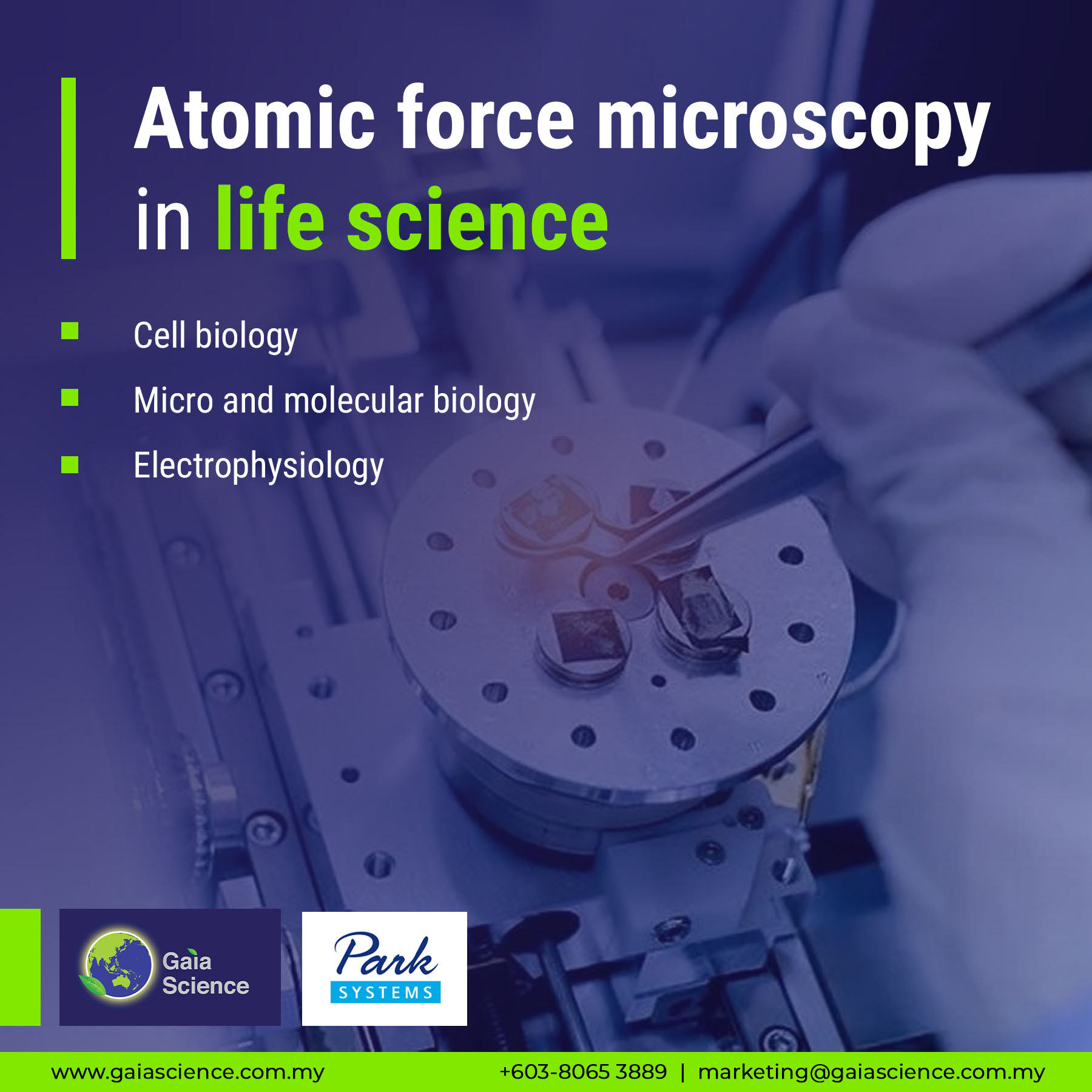News & Events - Details
Application of atomic force microscopy in life science
03 June 2022The last decade has established atomic force microscopy (AFM) as a technique in life sciences applications ranging from single molecules to living cells and tissues. AFM remains one of the few microscopy tools to offer premium resolution on bio-macromolecules at near-physiological/native sample conditions.
As time marches on, we are pressed by new challenges to better understand the phenomena of life not yet illuminated by the light of science. One such daunting frontier is at the nanoscale. Applying atomic force microscopy (AFM) to life science, researchers are now allowed to begin exploring the darkened mysteries at this border with the unknown.
AFM for life sciences applications
Atomic force microscopy offers several advantages that make it a powerful partner to the optical techniques used in the new biologies. It requires no dehydration, sample labelling, or surface coating; operates well in liquids and on live cells; and can detect at the single-molecule level. In comparison, optical techniques often use fluorescent labels to tag organelles or subcellular components such as nucleic acids, proteins, or lipids. Also, while optical techniques are typically limited in XY resolution to about 180 nm, AFM extends XY resolution to the nanoscale.
Examples of life science applications which are unique to atomic force microscopes are shown below.
Cell Biolog
Micro and Molecular Biology
Electrophysiology
Upgrade your materials research capabilities with Park AFM
The characterization of biological nanomaterials has always been a technically difficult challenge for researchers and requires instrumentation with the versatility to match ever-changing application needs. Park Systems offers a high quality AFM product line replete with corresponding accessories, software, and complementary technologies such as Scanning Ion Conductance Microscopy (SICM) to tackle a wide range of nanoscale research demands.
Researchers using Park Systems AFM in life science can acquire the nanoscale morphology of biological samples accurately and easily. Of particular use is the force-distance spectroscopy that AFM provides. This technique allows for the characterization of biological materials along with such physical properties as stiffness, adhesion, and even its Young's modulus with sub-nN level precision.
Furthermore, Park Systems AFM has developed an innovative in-liquid imaging technology, Scanning Ion Conductance Microscopy (SICM). This technique has enabled researchers to study complicated physiological phenomena in liquid directly, something not possible with conventional microscopes. Not only are physiological biomaterials and live cells able to be imaged with Park SICM, but various pipette-based applications can be integrated into the investigation such as patch clamping for ion channel signal detection, electrochemical reaction analyses, and even nanoinjections or nanobiopsies.
Confused? Let us help you to make it easier. Our trained team of professionals is ready to help you through the selection process from start to finish. Reach out today to start the conversation. Call us at +603 8065 3889 today or send us a message at marketing@gaiascience.com.my.


 SingaporeSG
SingaporeSG ChinaCN
ChinaCN MalaysiaMY
MalaysiaMY IndonesiaID
IndonesiaID MyanmarMM
MyanmarMM